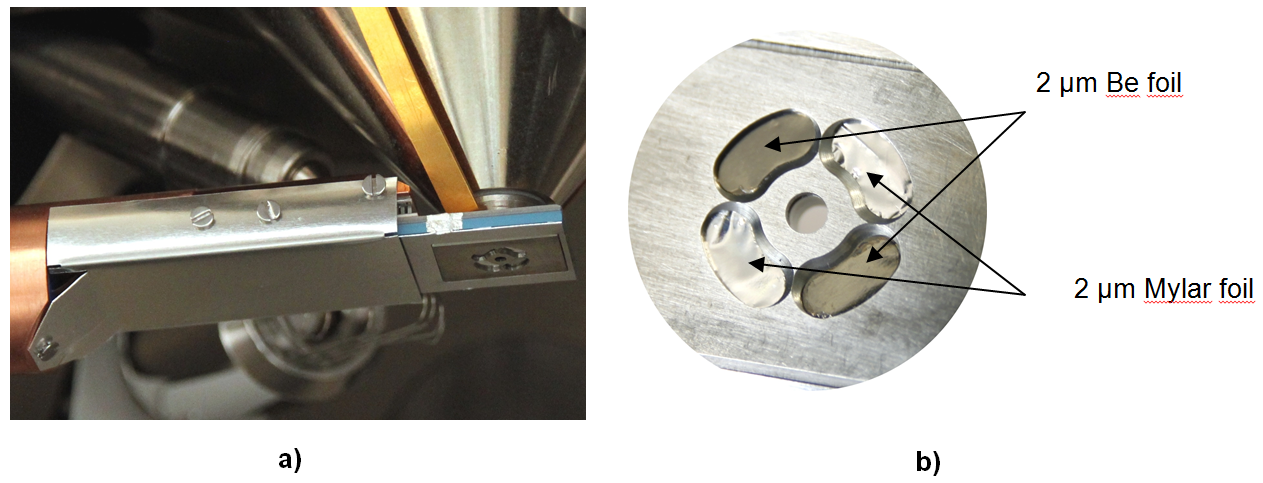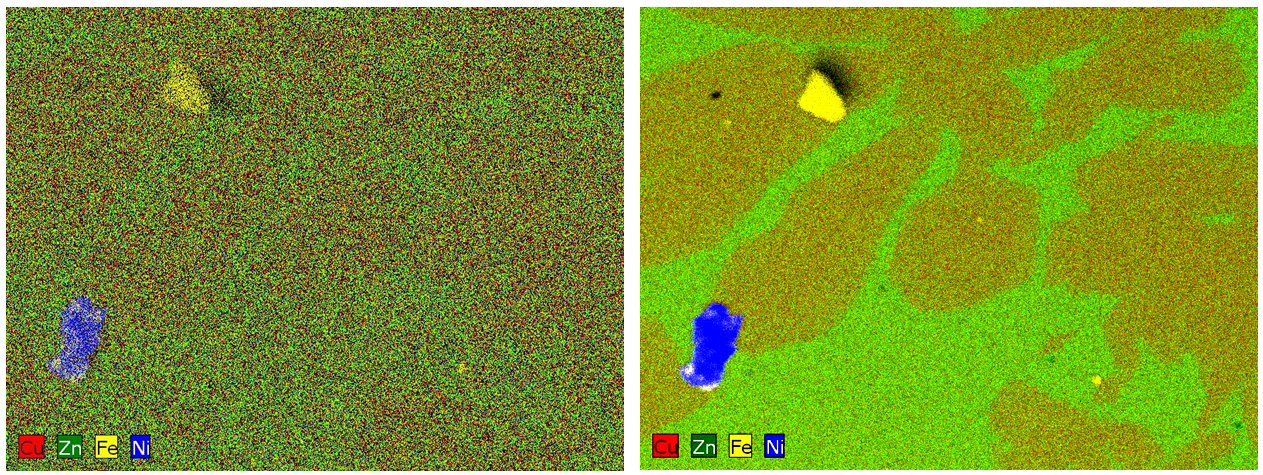IT-4-P-1688 High Sensitivity and Minimum Acquisition Time with the Annular EDX Pole Piece Silicon Drift Detector “Rococo2”
The operation conditions of Scanning Electron Microscopes (SEM) have changed a lot over the last years and many applications have to deal with very low primary beam energies and currents. Modern Energy Dispersive X-ray (EDX) detectors have to accomplish these tasks i.e. they need to support a large geometric collection efficiency (solid angle) in order to enable fast measurements even at weak X-ray intensities. This demands not only for large area detectors but also for intelligent detector designs.
The annular Silicon Drift Detector (SDD) “Rococo2” uses a highly optimized geometry which covers a very large solid angle. It consists of 4 cloverleaf shaped SDD cells combined on one monolithic chip with a total sensitive area of 60 mm² and a center hole. The detector is shown in Figure 1a. It can be positioned right underneath the pole piece extremely close to the sample which results in a very large solid angle up to 1.4 sr. [1] Comparing this number with the solid angle of a conventional 10 mm² SDD detector of typically 0.01 sr it is obvious that the Rococo2 detector can deliver 100 times larger signal intensities at the same measurement time and conditions. Figure 2 shows EDX mappings of a duplex brass sample which illustrate this benefit.
High energetic electrons which are backscattered from the sample are typically filtered by using magnetic electron traps in front of the EDX detector. In case of the Rococo2 detector this is not possible because the magnetic field would disturb the electron beam. In this case the Backscattered Electrons (BSE) are filtered by hardware filter foils which stop the electrons while transmitting the X-ray photons. We will present measurements with a combination of different filter foils made of 2 µm thick Beryllium and 2 µm Mylar for each two detector cells (see Figure 1b). With the used combination of foils a continuous undisturbed X-ray sensitivity down to carbon and boron can be achieved.
We will further present concepts for a combined annular detector for measuring backscattered electrons and X-Rays simultaneously. By increasing the central hole of the EDX detector it is possible to detect backscattered electrons at high take off angles in the central part of the detector. This enables the detection of X-ray and BSE signals at the same time with relatively high collection efficiency and just one single detector head. Figure 3 shows two 2 concepts for such a detector with the BSE detector positioned either above or at the same level as the annular EDX detector. We will show calculations of the solid angle and the collection efficiency of different EDX and BSE detector combinations and evaluate the results by comparing images or spectra.
[1] A Niculae et al, Microscopy & Microanalysis, vol. 18 S2 (2012) p. 1202-1203


